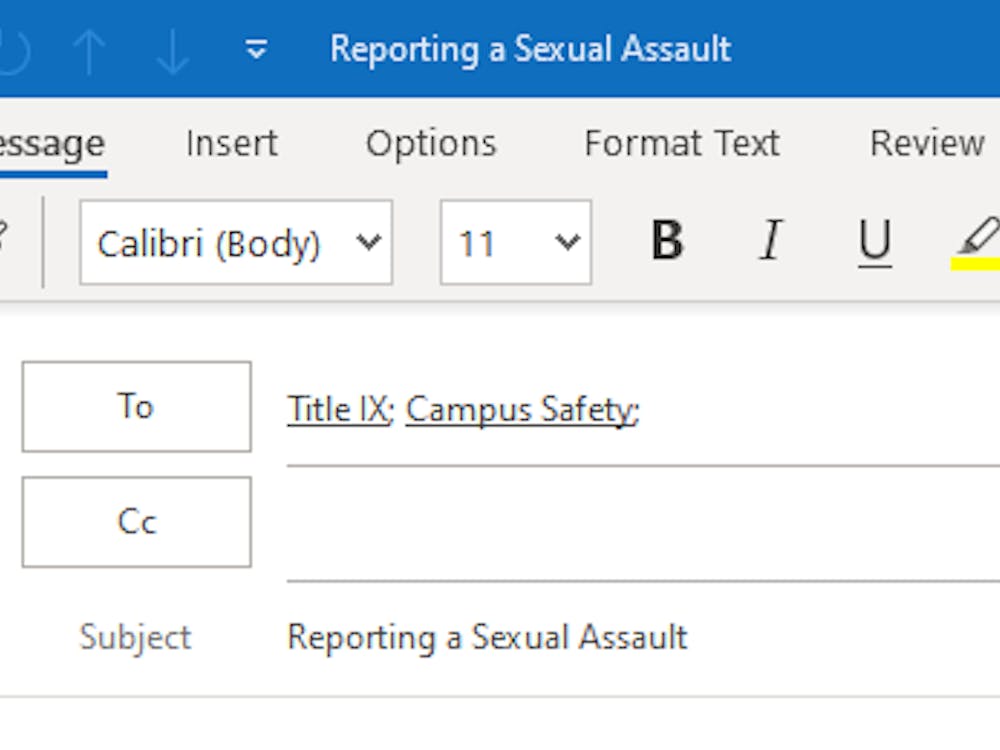Dear UP,
“[UP’s Vision 2020 Plan] focuses on three core themes: Teaching and Learning, Faith and Formation, and Service and Leadership. [Under] Service and Leadership, [UP will] infuse our entire community with a sense of internationalization and diversity”
- University of Portland Strategic Plan: Vision 2020 (https://issuu.com/universityofportland/docs/up_strategic-plan-2020_e?e=1770758/38648388)
One month into 2019 and this vision plan has a long way to go. There are endless conversations with the phrase “diversity and inclusion” thrown into them, but it seems to be more words than action. For some students, this vision is not merely an idealized university plan; it is a call for representation of diverse experiences and voices to feel comfortable in the space we call home.
As diversity clubs on campus, we took an objective look at our current state in the university and compared them to this Vision at hand. And UP, we have some suggestions.
Strategy D1 of UP’s Vision 2020 Plan: “...create a position to lead and support existing campus-wide international and intercultural endeavors.”
There are 94 student-led organizations on campus, and budget requests grow with UP’s increasing student involvement, leading to concerns about fair allocation.
The Spring 2019 Budget distributed $341,650 among the 94 student-run organizations. After removing ASUP-related functions and revenue generating organizations like CPB, the remaining were broken up into 6 categories: Academic, Sports, Diversity-Related & Cultural, Special Interest, Organizations, and ROTC. When looking at the total granted for each of these categories, Academic and Sports are at the top, while Diversity-Related & Cultural is tied with Special Interest for second, falling about $7,000 behind. This leads to the question: How is the allocation determined if not based on the number of clubs per category?

According to ASUP Senate Bylaws, “first priority will be given to those events on campus and/or events, which benefit the most University of Portland students possible; funds requested for club conferences and competitions will receive lower priority” (https://sites.up.edu/asup/asup/governing-documents/asup-updated-bylaws-10-08/). By these standards, organizations who host more on-campus events for UP students should receive a greater priority in terms of budget. As of Feb. 8, there have been 136 on-campus events for the 2018-19 academic year, and Diversity-Related & Cultural clubs hosted most of them.

As one of the largest club groups who promote the most on-campus events, diversity-related clubs are cut short. Although not appearing as needing much, costumes, food, props and decorations alone make up the greatest costs that diversity clubs have to bring authentic experiences to their events for the UP community.
Changing how the budget is allocated is not feasible. Instead, the opportunity grant and its eligibility for use should be changed. The opportunity grant is for funds not requested during the initial budget request season. Yet, the greatest need for the opportunity grant comes from not being granted enough initially. If the opportunity grant’s eligibility were altered to become more accessible, its funds could be used for more campus-wide events, promoting UP’s 2020 Vision.
Strategy D2 of UP’s Vision 2020 Plan: “Increase diversity of students, faculty, and staff by fostering a supportive, inclusive community and an accessible campus culture.”
Just as UP’s student population grows every year, clubs on campus also grow, demonstrated by constant construction on campus. Despite this, there has yet to be a project for diversity-related clubs. The new Diversity Center in Buckley Center is a step in the right direction. However, it lacks the space our clubs need.
Diversity-related clubs range from 15 to 200 club members, and the new Diversity Center is smaller than a regular sized classroom which holds typically 20 students. St. Mary’s is the next available space. However, this space is shared among all 94 student-led clubs and organizations and priority is given to the departments held within St. Mary’s. As clubs grow and new ones develop, this space quickly became unsuitable for community needs.
With cultural show preparations in action, greater demand exists for the limited quantity of space on-campus, especially during Spring semester. This has become a race to see who can reserve first and has created an atmosphere where cultural clubs must fight for limited spaces. Instead the cultural show season should promote support and appreciation for diverse communities. Last Spring, FASA sa UP, Guam Club and VSA had to fight for the limited availability of the Quiet Side of the Commons to host their annual cultural shows. In attempt to showcase our communities and diverse backgrounds, there simply seems to be no conducive space for us.
As minorities on campus, we learned how to make our presence known and our voices heard. Yet, there is only so much we can do without the necessary support on campus. This includes the need for space on campus and a “fit” advisor. It’s a completely different experience having a professor who looks like you and shares a culture with you. Having representation in faculty and staff of people who truly understand your cultural background immensely contributes to the growth and prosperity of clubs and individuals. For example, FASA looks forward to an annual conference off campus, which, by club and organization rules, requires a chaperone. Last year, FASA asked multiple faculty members on campus to chaperone when their advisor was unable, and came close to not attending due to continuous rejections. It’s understandable that it would be odd for a non-Filipino with no ties to the culture to attend a Filipino conference. Yet, there is very little you can do when the options are limited at UP.
Additionally, with administrative changes involving diversity clubs, we are often left in the dark. Finding answers to why these decisions were made is a difficult process. We are sent from person to person, only to be met with more questions than answers. We want to be included in the discussion so that there is transparency and no miscommunication.
Immediate solutions are not plausible. However, there are steps UP can make to become closer to their 2020 vision. Other PNW universities, such as OSU, Gonzaga and PSU, have a multicultural center larger than a classroom. UP students deserve one too. With the construction of the Dundon-Berchtold building, we must ask if there is any way UP can make some room. This would provide us a space to meet people who look like us and share our multicultural experiences.
Diversity must happen at every level. We need staff that looks like us, budgets to support us, and an administration that genuinely cares for and supports us. We are all in support of the 2020 Vision and we’re writing this with only the best intentions.
We have these suggestions and many more. If you want to add diversity, turn to diversity clubs. We exist. We can help. We want to see this vision come true, even if it’s past our time at UP.
So, we have one question left: What’s next UP?
Sincerely,
The Diversity Club Leaders on Campus:
FASA sa UP
Feminist Discussion Group
La Mesa Redonda
Mixed Student Union
Gender and Sexuality Partnership (GSP)
Hawaii Club
Guam Club
Latinx Student Union
Chinese Language and Culture Club
The authors can be reached at tanega19@up.edu, legaspis20@up.edu or antona20@up.edu.








